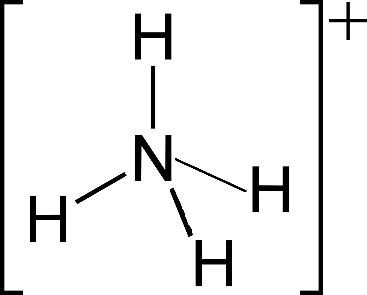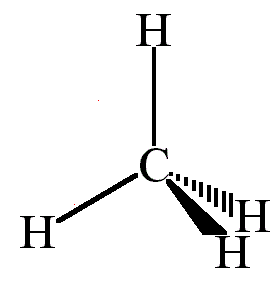
In which of the following molecules, the central atom does not have $s{{p}^{3}}$ hybridization?
a.) $C{{H}_{4}}$
b.) $S{{F}_{4}}$
c.) $B{{F}_{4}}^{-}$
d.) $N{{H}_{4}}^{+}$
Answer
558.3k+ views
Hint: The 3-D arrangement of atoms in a molecule is known as its molecular geometry. The molecular geometry includes the shape of the molecule as well as the bond length and bond angles of the molecule. All these factors help to determine the position of each atom in the geometry.
Complete step by step answer:
The general formula which we use to calculate the hybridization of a molecule is
Hybridization number =$\dfrac{1}{2}\left[ V+M-C+A \right]$
Here V = the number of valence electrons of the central atom
C = charge on cation
A= charge on anion
M is the number of atoms linked to the central atom
For $B{{F}_{4}}^{-}$
Hybridization number = $\dfrac{1}{2}\left[ 3+4-0+1 \right]=4$
And hybridization will be $s{{p}^{3}}$

For $N{{H}_{4}}^{+}$
Hybridization number = $\dfrac{1}{2}\left[ 5+4-1+0 \right]=4$
And hybridization will be $s{{p}^{3}}$

For $C{{H}_{4}}^{{}}$
Hybridization number = $\frac{1}{2}\left[ 4+4-0+0 \right]=4$
And hybridization will be $s{{p}^{3}}$

For $S{{F}_{4}}^{{}}$
Hybridization number = $\dfrac{1}{2}\left[ 6+4-0+0 \right]=5$
And hybridization will be $s{{p}^{3}}d$

Hence the correct answer is option (B)
Additional Information:
VSEPR theory also helps us to predict the geometry of the molecule from the number of electron pairs and lone pairs around the central atom. For example $S{{O}_{2}}$
S has 6 unpaired electrons and oxygen is a divalent atom.
Hybridization can be calculated by adding sigma bonds and lone pairs.
S has 1 lone pair and form 2 sigma bond: hybridization = $1+2=3$
And hybridization will be $s{{p}^{2}}$ and shape is v shaped
So, the correct answer is “Option B”.
Note: The geometry and shape of a molecule can be the same or different as geometry of the molecule depends on the arrangement of lone pair and bond Pair while the shape of a molecule excludes the lone pair on the central atom.
Complete step by step answer:
The general formula which we use to calculate the hybridization of a molecule is
Hybridization number =$\dfrac{1}{2}\left[ V+M-C+A \right]$
Here V = the number of valence electrons of the central atom
C = charge on cation
A= charge on anion
M is the number of atoms linked to the central atom
For $B{{F}_{4}}^{-}$
Hybridization number = $\dfrac{1}{2}\left[ 3+4-0+1 \right]=4$
And hybridization will be $s{{p}^{3}}$

For $N{{H}_{4}}^{+}$
Hybridization number = $\dfrac{1}{2}\left[ 5+4-1+0 \right]=4$
And hybridization will be $s{{p}^{3}}$

For $C{{H}_{4}}^{{}}$
Hybridization number = $\frac{1}{2}\left[ 4+4-0+0 \right]=4$
And hybridization will be $s{{p}^{3}}$

For $S{{F}_{4}}^{{}}$
Hybridization number = $\dfrac{1}{2}\left[ 6+4-0+0 \right]=5$
And hybridization will be $s{{p}^{3}}d$

Hence the correct answer is option (B)
Additional Information:
VSEPR theory also helps us to predict the geometry of the molecule from the number of electron pairs and lone pairs around the central atom. For example $S{{O}_{2}}$
S has 6 unpaired electrons and oxygen is a divalent atom.
Hybridization can be calculated by adding sigma bonds and lone pairs.
S has 1 lone pair and form 2 sigma bond: hybridization = $1+2=3$
And hybridization will be $s{{p}^{2}}$ and shape is v shaped
So, the correct answer is “Option B”.
Note: The geometry and shape of a molecule can be the same or different as geometry of the molecule depends on the arrangement of lone pair and bond Pair while the shape of a molecule excludes the lone pair on the central atom.
Recently Updated Pages
Master Class 11 Business Studies: Engaging Questions & Answers for Success

Master Class 11 English: Engaging Questions & Answers for Success

Master Class 11 Computer Science: Engaging Questions & Answers for Success

Master Class 11 Social Science: Engaging Questions & Answers for Success

Master Class 11 Maths: Engaging Questions & Answers for Success

Master Class 11 Biology: Engaging Questions & Answers for Success

Trending doubts
Differentiate between an exothermic and an endothermic class 11 chemistry CBSE

10 examples of friction in our daily life

One Metric ton is equal to kg A 10000 B 1000 C 100 class 11 physics CBSE

Difference Between Prokaryotic Cells and Eukaryotic Cells

State the laws of reflection of light

Explain zero factorial class 11 maths CBSE




